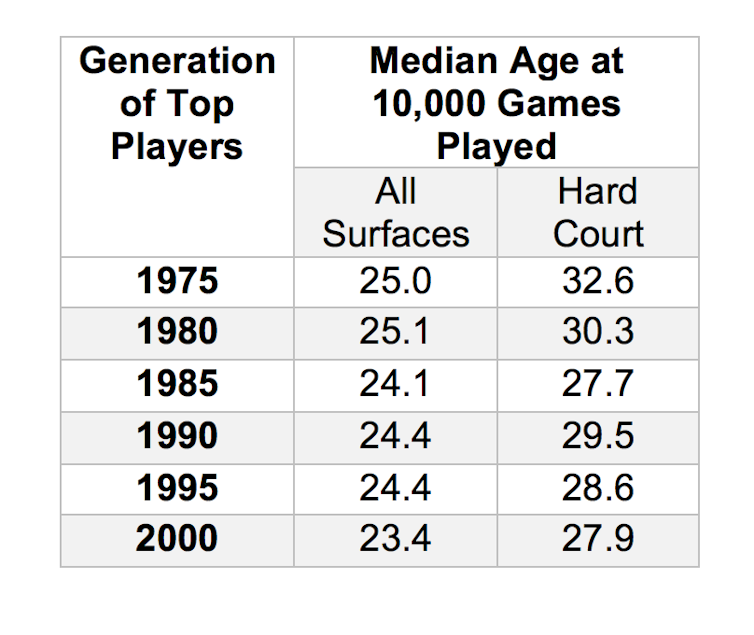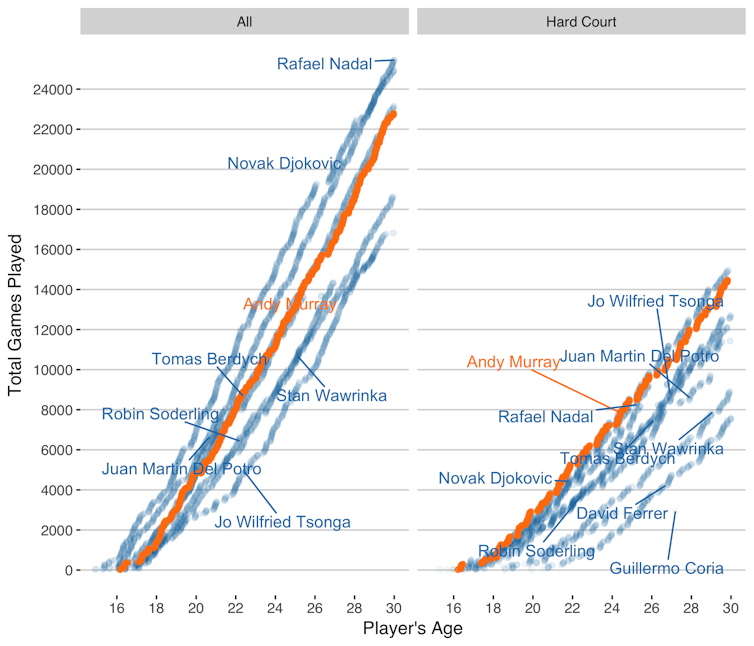Stephanie Kovalchik, Victoria University
Much of the tennis world was looking to the 2018 Australian Open to be the story of comebacks.
Although some players have returned to start their season at the Australian Open, others have not. Five-time Australian Open finalist Andy Murray was the biggest name among the early withdrawals.
Rather than a time of comebacks, 2018 is shaping up to be a season of delayed starts and ongoing depletion at the top of the game. It’s a trend that signals a systemic problem in men’s tennis, which can’t be shrugged off as the misfortune of a few.
The 2017 US Open was struck by an epidemic of injuries. This resulted in an all-time low number of top 10 players in the draw, including the absences of then No. 1 Andy Murray and No. 4 Novak Djokovic.
Injury and game age
Injuries in sport are complex and can’t be attributed to any one cause. Yet the recent rise in injuries among the best men’s tennis players compels us to look for some widespread contributing factors.
In this regard, a closer look at the amount of competitive play that has become the norm among top players is telling. A men’s Grand Slam match can have as few as 18 games or as many as 183 games played, as in the John Isner-Nicolas Mahut Wimbledon marathon of 2010, or more.
So let’s focus on game age – the number of professional games played up to a certain age – to measure a player’s competitive age more precisely.


